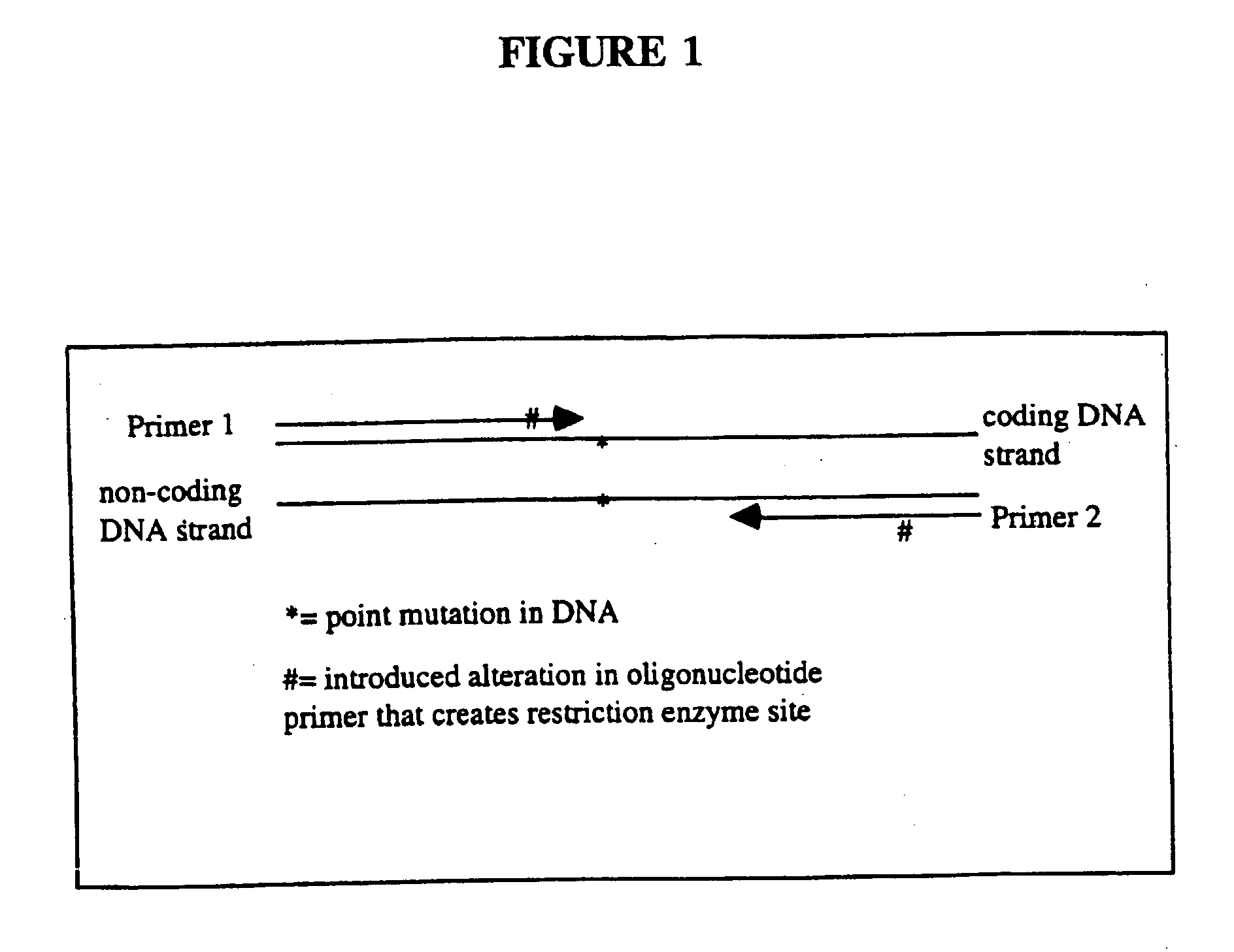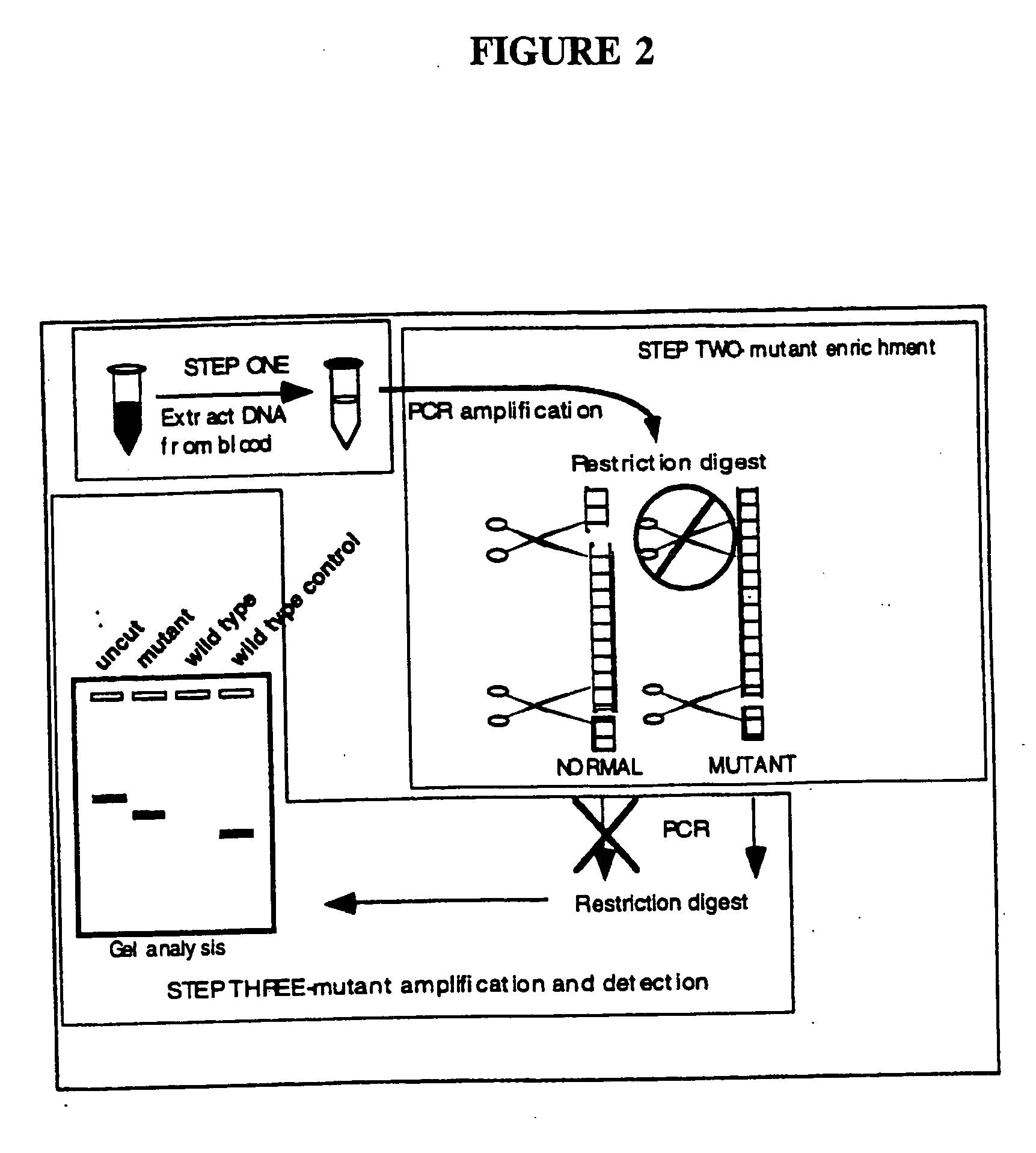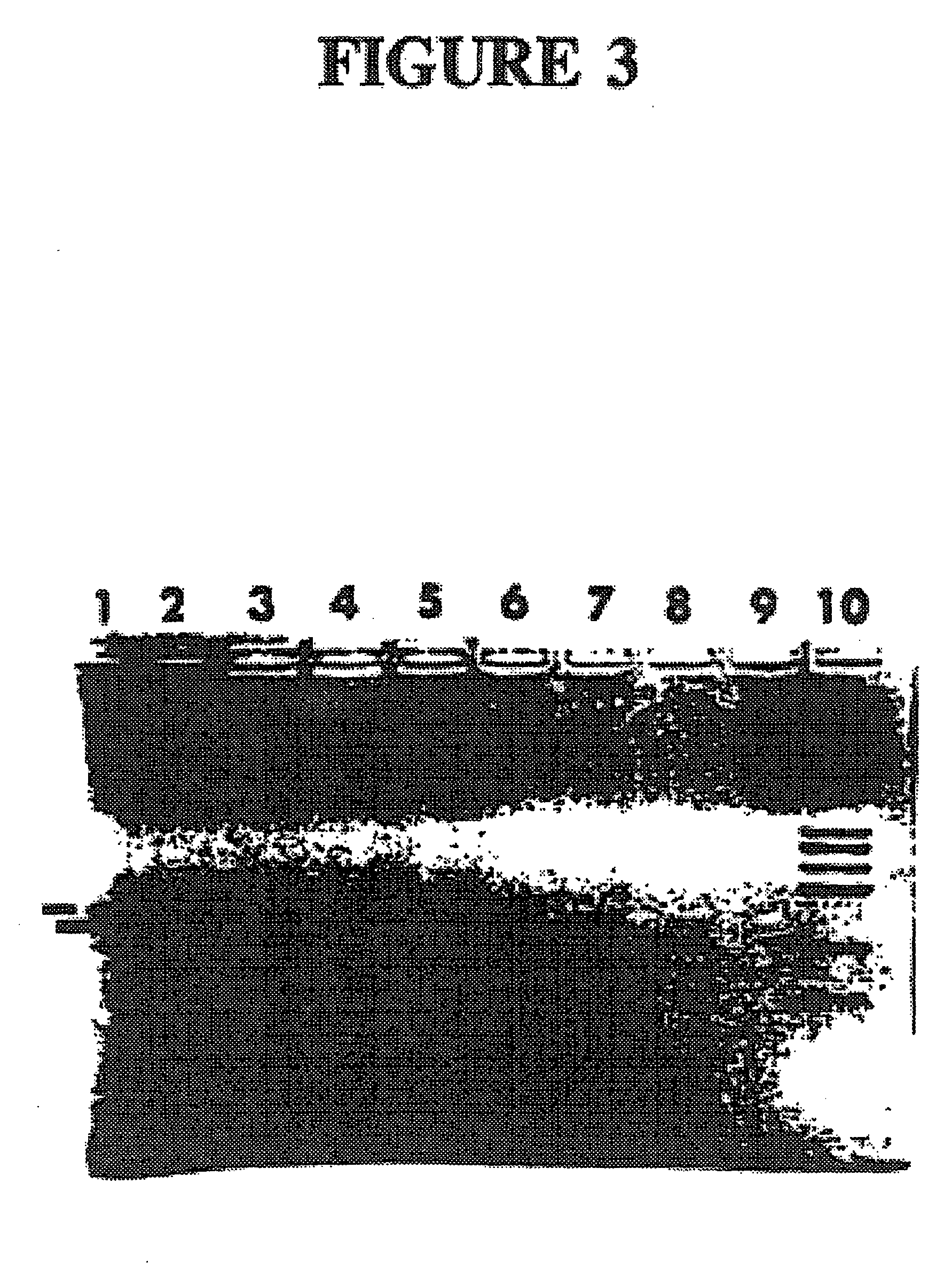Detection of extracellular tumor-associated nucleic acid in blood plasma or serum using nucleic acid amplification assays
a nucleic acid amplification and extracellular tumor technology, applied in the direction of peptide sources, p53 proteins, peptides, etc., can solve the problems of not being able to achieve clinically useful detection of non-invasive neoplasms or pre-malignant states, and studies that did not employ nucleic acid amplification methods, so as to achieve the effect of predicting prognosis or tumor behavior
- Summary
- Abstract
- Description
- Claims
- Application Information
AI Technical Summary
Benefits of technology
Problems solved by technology
Method used
Image
Examples
example 1
Detection of Extracellular Mutant K-ras Oncogene DNA in Plasma or Serum
1. Background
[0106] Colorectal cancer (CRC) is a common and often fatal disease, representing the second or third leading cause of cancer death in the U.S. Local spread of disease is common, and regional or widespread metastasis has occurred in roughly 60% of CRC at the time of diagnosis (Parker et al., ibid.). Current screening tests for CRC involve stool sampling for occult blood or endoscopic examination. These methods provide no information on the spread of disease, however.
[0107] Advances in the understanding of the benign-to-malignant transformation sequence are based largely on studies of CRC and its precursors (Fearon et al., 1987, Science 238: 193-197; Fearon & Vogelstein, 1990, Cell 61: 759-767; Hamilton, 1992, Cancer 70: 1216-1221). The genesis of an adenocarcinoma is understood to require the occurrence of a number of mutational events, leading to the transformation of normal epithelium into a clo...
example 2
Detection of Extracellular bcl-2 DNA and bcl-2 / IgH Translocations in Plasma or Serum
1. Background
[0123] Follicular center cell lymphoma (follicular lymphoma) is the most common form of primary malignancy of the lymph nodes in the U.S., comprising more than half of all cases of lymphoma. Follicular lymphoma is generally a slowly progressive malignancy, with patient survival averaging several years to a decade or more. Standard treatment of follicular lymphoma depends on factors such as extent of disease and age, and typically involves multi-agent chemotherapy. Newer approaches to therapy include high dose chemotherapy with bone marrow transplantation and immunotherapy, either actively or passively induced. Because of the high rate of relapse among patients treated with standard regimens, and because of the general oncologic tenet that treating small amounts of tumor rather than large masses is more efficacious, there is a need for methods to detect minimal amounts of tumor in foll...
example 3
Detection of Extracellular Mutant p53 DNA in Plasma or Serum
1. Background
[0135] The p53 oncogene is one of the most frequently mutated tumor suppressor genes in human cancer. Among other functions, it is a regulator of the cell cycle and is involved in programmed cell death, and its mutation permits unopposed cell proliferation. In colorectal cancer (described above in Example 1), approximately half of all CRCs contain mutations of the p53 oncogene (Greenblatt et al., 1994, Cancer Res. 54: 4855-78), and a survey of the EMBL Data Library of 360 published mutations of p53 in CRC cases indicates that 49% occur at 5 particular amino acids (Hollstein et al., 1994, Nucleic Acids Res. 22: 3551-5). Recent data indicate that p53 and K-ras mutations in CRC tend to be mutually exclusive, that is, tumors are commonly found with only one or the other, rarely both (Dix et al., 1995, Diagn. Molec. Path. 4: 261-265). These finding suggested that an assay for p53 gene mutations in extracellular D...
PUM
| Property | Measurement | Unit |
|---|---|---|
| pH | aaaaa | aaaaa |
| final volume | aaaaa | aaaaa |
| pH | aaaaa | aaaaa |
Abstract
Description
Claims
Application Information
 Login to View More
Login to View More - R&D
- Intellectual Property
- Life Sciences
- Materials
- Tech Scout
- Unparalleled Data Quality
- Higher Quality Content
- 60% Fewer Hallucinations
Browse by: Latest US Patents, China's latest patents, Technical Efficacy Thesaurus, Application Domain, Technology Topic, Popular Technical Reports.
© 2025 PatSnap. All rights reserved.Legal|Privacy policy|Modern Slavery Act Transparency Statement|Sitemap|About US| Contact US: help@patsnap.com



